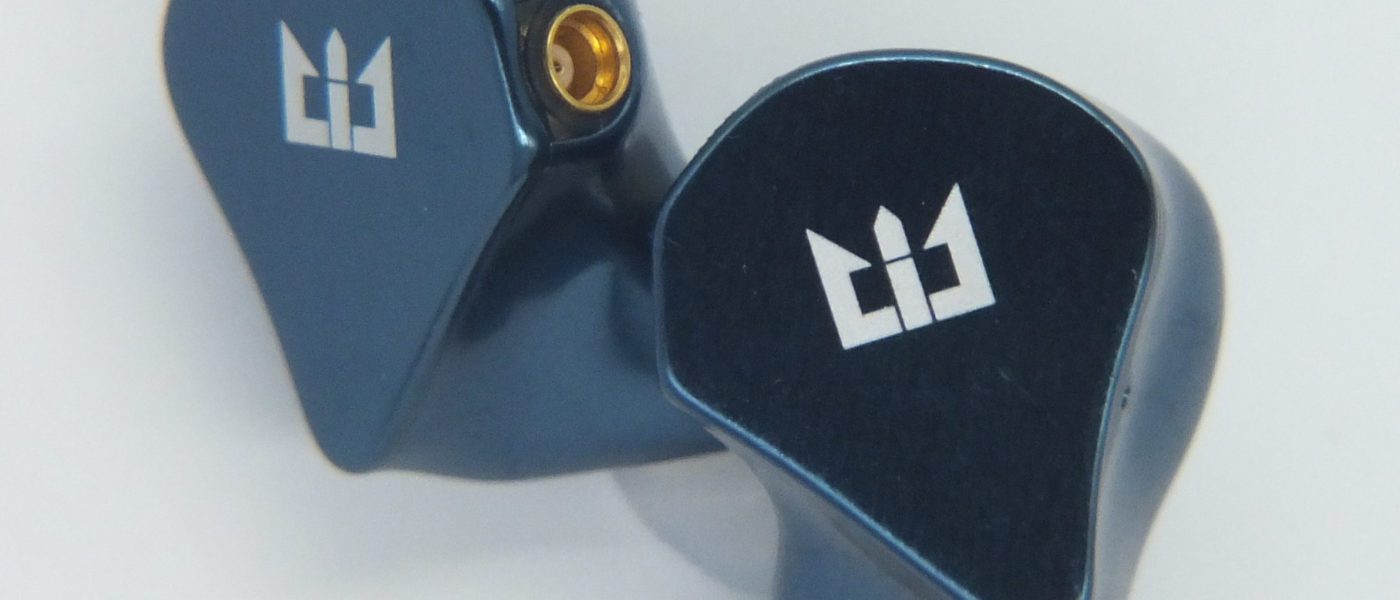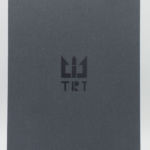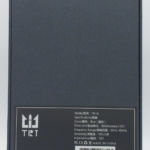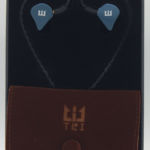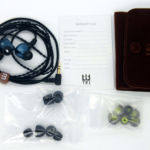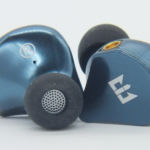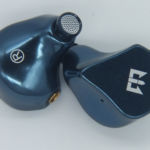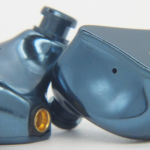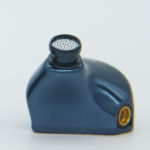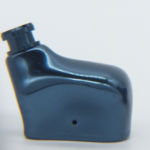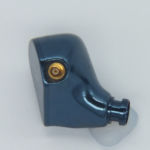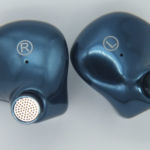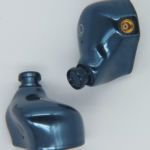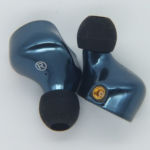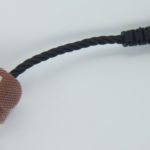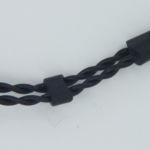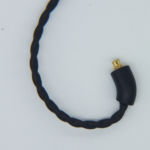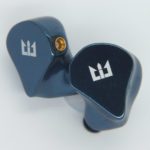TriAudio i4
disclaimer: The Tri Audio I4 was sent to me by Kinboofi for purposes of review. Prior to their request, I had not heard of the brand and in researching it, very little additonal information is available. It appears to be a new startup Chinese in-ear manufacturer with the I4 being its first product broadly marketed outside China. I found a few references to the i4 model in recent Japanese reviews, but very little in the way of technical detail on the model or the company. Kinboofi sells the Tri Audio I4 through their Amazon store and can be reached through their facebook page if you have an interest in picking one up. Retail on the I4 is roughly 70USD for reference.
Unboxing / Packaging:
The i4 comes in a lift top style box in understated matte black with a gloss black TRI and logo on the cover. The rear of the box has specs on the lower portion using a glued on label. I would expect to see subsequent releases in the same box with a different label in place of the i4 version. Inside the box, the earpieces and cable form a heart shape in a foam housing at top while the carry case holding the remaining accessories sits beneath it. The carry case contains the remainder of the tip selection (7 total) and the cable tie. Tips include three sizes (SML) of two types of silicone and a single pair of Foam tips that I would characterize as large. Standard T400 tips fit.
Build/Fit:
Shells are aluminum alloy and on the small side. Faceplates and inner shells both sport a clean medium blue anodizing with a white Tri logo on the faceplates and L and R clearly marked on the under surface. Polish is extremely well done with the seam on the faceplate being visible but very even with no gaps, burs, or glue to be seen. Venting is provided by a pin-hole vent on the rear surface and the inner surface behind the nozzles. Nozzles exit the forward most area of the earpiece with a slight upward rake and a pronounced lip for holding T400 tips in place. Unlike most at this price point, the nozzles are not a separate part and are machined as part of the creation of the inner shell. mmcx connectors are recessed to be even with the surface of the shell and again are well fitted with no gaps or glue. I found comfort to be very good partially due to their smaller than average size and partially due to their shape and weight. Overall, these come as close to disappearing as can reasonable be expected.
Internals:
The Tri I4 uses a single 10mm bio-composite dynamic driver along with a customized Knowles balanced armature driver to handle the high frequencies. Nominal impedance is listed as 12Ω but gives the caveat of being ±20%. Sensitivity is listed as 103dB/mW ±3db. I found the i4 was usable from a phone or tablet, but did like the sound a bit better with the Opus #1s as the source as the extra power gives the i4 a bit better control especially in the lows.
Cable:
The cable is a standard length (1.2m) cable terminated with a gold plated 90º 3.5mm TRS jack. Cable is a 4 wire oxygen free copper twist in black casing up to the small black plastic splitter, then exits as two twisted pairs as it continues northward. A chin-slider is provided immediately above the splitter and could be missed as it appears to be part of the splitter at first glance. Terminations at the earpieces have pre-formed earhooks and gold plated mmcx connectors as well.
Sound:
Bass:
The i4 has good sub-bass depth and quantity with roll-off starting to be audible below 50Hz. There is considerable mid-bass emphasis as it cuts through the rest of the signature pretty clearly. Mid-bass provides good thump and tapers as it moves toward the mids with very little mid-bass bleed to color the sound. Bass texture is good and control is better than expected at the price point as mid-bass remains fairly tight even as tracks get increasingly complex.
Mids:
Lower mids are slightly recessed but have good detail and very little perceptible bass bleed. Male vocals have good timbre and sound realistic. As we move up, the mids take a definite turn forward with upper-mids becoming the overall focal point of the signature. Voices move to the front of the instrumentation. Guitar timbre is good with acoustic being slightly less so than electric. For my tastes, the upper mids could step back slightly as they are a bit unnaturally forward, but it does make this a very vocal-centric tuning.
Treble:
Lower treble shares the forward push with the upper-mids and makes the Tri-i4 vocal centric. Above the lower treble hump, the treble drops back fairly rapidly with a bit a bump at 10kHz. This prevents any hint at stridency, but also limits upper extension and air at the top end. Overall, its a good option for the treble shy but those looking for the last bit of treble extension will find the i4 to be a bit shy of that. Cymbals come across as a bit soft and not as crisp as they should be as a result of treble tuning.
Soundstage / Imaging:
Stage on the i4 is fairly large with good depth and slightly larger width. Imaging is good with movement on the stage being easy to track and placement of instruments being mostly proper with a few minor overlaps. Instrument separation is good until pieces get overly complex and then the i4 starts to struggle a bit to keep things clean. Layering follows that same pattern of being good until things get overly complex and then it starts to decay a bit. It is still passable at worst, but not quite as clean as when used with a more sparse arrangement.
Comparisons:
BQEYZ BQ3 – construction is similar with both sporting well made metal shells and both having solid cables provided. The i4 is a bit more of a V signature while the BQ3 is a bit more W shaped. Low end extension is about equal on both models with a slight boost in quantity going to the i4 while upper end extension is a bit better on the BQ3. Those that find the BQ3 a bit bright will prefer the i4 while those that find the i4 a bit closed in at the top end may like the BQ3 a bit better.
TFZ Series 2- I include this one based on price point and signature, but build isnt even close. Plastic fantastic vs all aluminum and polished is a bit of a mismatch here. The TFZ2 is a bit deeper in the recess so mids take a backseat a bit more and the treble is more aggressive which can make the TFZs2 sound a bit harsh at times in comparison. Overall, the i4 is the better looking and sounding of the pair.
AAW/Shozy -Hibiki Mk2 – Again, build goes to the i4 (not even close). Cable goes to the AAW (no surprise there). Signatures are both Vs but again the Hibiki is a bit more recessed in the mids and shows less resolution than the i4. If I could move the cable from the Hibiki to the i4, I’d say the i4 is the better choice, unfortunately, one is bi-pin and the other mmcx so not an easy swap.
Ibasso IT01 – The IT01 wins on kit as it has better accessories and build is a wash as both are well made. Arguably the materials used are better on the i4 but with reasonable care both should last well. The recess in the mids is a bit more pronounced than on the i4, but treble extension is a bit better on the it01. Overall, both have a lot to like and those looking for good bass will like both, those listening to a lot of strings will likely prefer the i4 with its better mid-range detail.
Thoughts / Conclusion:
The in-ear market is certainly a crowded space and trying to break into what is arguably the top selling bracket in the market with a 1st product is a daunting task. TriAudio has done a good job of building a product that is eye-catching, well built, and with a well detailed polite sound signature that emphasizes the things most listeners of Rock and Pop music are looking for. The i4 will make a good companion for teens that may be a bit hard on in-ears as the shells are nearly indestructible, the cable replaceable, and the sound signature well matched to today’s releases. Overall, it is an impressive debut and TriAudio will certainly be on my radar for additional testing/reviews as new products are released. Thanks again to Kinboofi for introducing me to Tri and graciously sending the i4 for review.
-
Bass - 7.5/107.5/10
-
Mids - 6/106/10
-
Treble - 6.5/106.5/10
-
Soundstage - 7.5/107.5/10
-
Imaging - 7/107/10
Summary
Pros: Great build quality, good comfort level for long wear.
Cons: Not the most neutral signature, instrument separation suffers on overly complex tracks.

